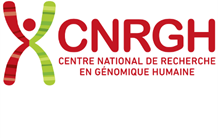Benchmark study of Adaptive Sampling algorithms: Simulation of various viral mixtures
Résumé
Background. To monitor the spread of a disease, wastewaters surveillance offers a global view
of both the nature and quantity of circulating pathogens, compared to traditional screening
methods [1]. It provides access to the entire population (including asymptomatic patients) at a
cheaper cost than individual tests and gives an early indication of the epidemic’s state. It is even
possible to quantify the relative abundances of the different circulating lineages of a single
pathogen, like a given virus, as was shown during the COVID-19 pandemic [2]. However, most of
these techniques uses Polymerase Chain Reaction, which among otherthings, biasesthe relative
abundance of the target species due to the amplification step.
Wet lab protocol. How can one monitor several viruses from a wastewater sample in a single
sequencing experiment, while biasing the relative abundances of the different target species as
little as possible? To selectively enrich the sample in target species, we plan to test and optimize
a hybridization-capture protocol targeting one or multiple species. The final products will be
sequenced using the Oxford Nanopore Technologies (ONT) MinION long-read sequencer. This
technology enables real-time analysis of the electric signal induced by the DNA fragments as
they pass through the device’s molecular pores.
Adaptive sampling. In particular, it is possible to reverse the voltage across the pore to reject
the DNA molecule before it is fully sequenced. The decision to reject the read is based on the
knowledge of the target genomes and the insight gained from the signal generated by
sequencing the first few hundred bases of the read. Taking this decision quickly enough allows us to spend more time sequencing the targets rather than non-relevant genomic material, thus
improving the signal-to-noise ratio and effectively enriching in target species. This process is
called Adaptive Sampling or Targeted Sequencing.
Benchmark. Before we integrate Adaptive Sampling (AS) to our wastewater sample analysis
protocol (and possibly develop our own algorithm), we conducted a benchmark of existing AS
methods, in order to identify the best design choices to make, and to define the experimental
conditions in which AS is the most efficient – in the context of virus search in wastewater
samples. Developed by the team of AS pioneer Matthew Loose, ReadFish [3] usesthe basecalled
translation of the signal together with traditional mapping against a reference dataset to
determine whether the read should be fully sequenced or not. More recently, BOSS-RUNS [4]
elaborates on ReadFish to optimize the information gain along the target genome. In contrast,
DeepSelectNet [5] uses the raw electric signal to feed a deep convolutional neural network with
residual connections. To evaluate those methods, we take advantage of the Icarust simulator [6]
that mimics the MinKNOW (ONT’s sequencing software) behavior during a real sequencing run.
Several experiments were performed in order to evaluate AS algorithms. The relative enrichment of
targetspeciesin comparison with a sequencing run without AS along with the estimation of their
relative abundances were used to compare the algorithms.
| Origine | Fichiers produits par l'(les) auteur(s) |
|---|



